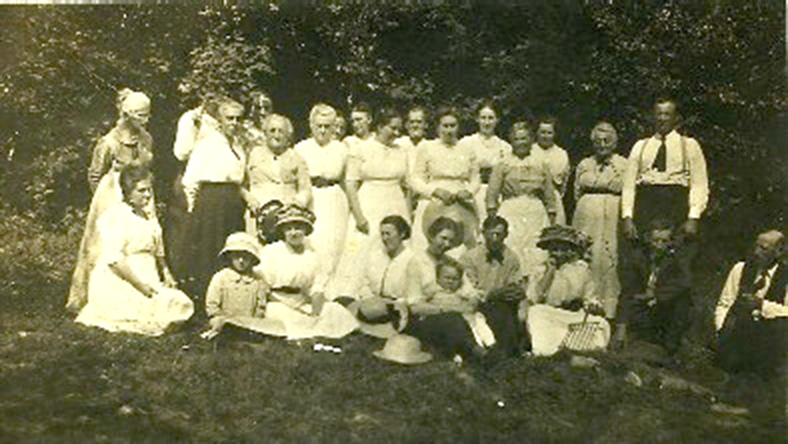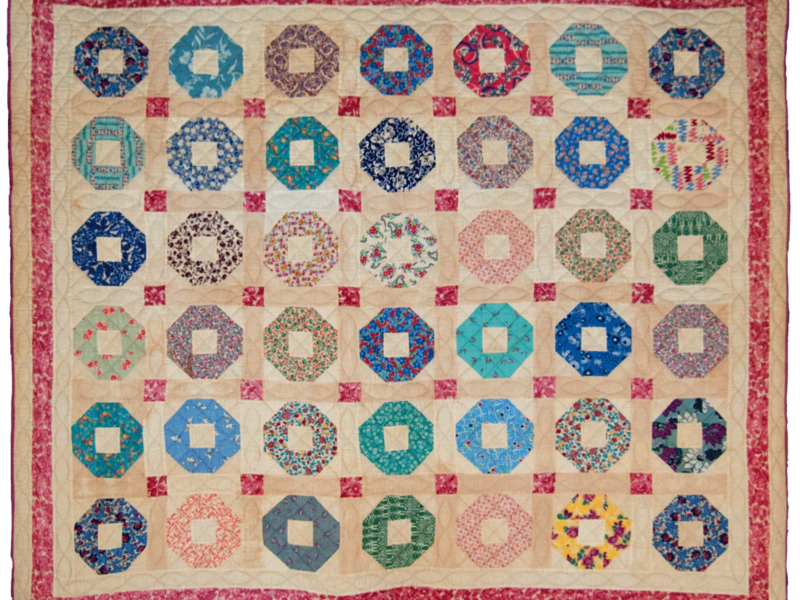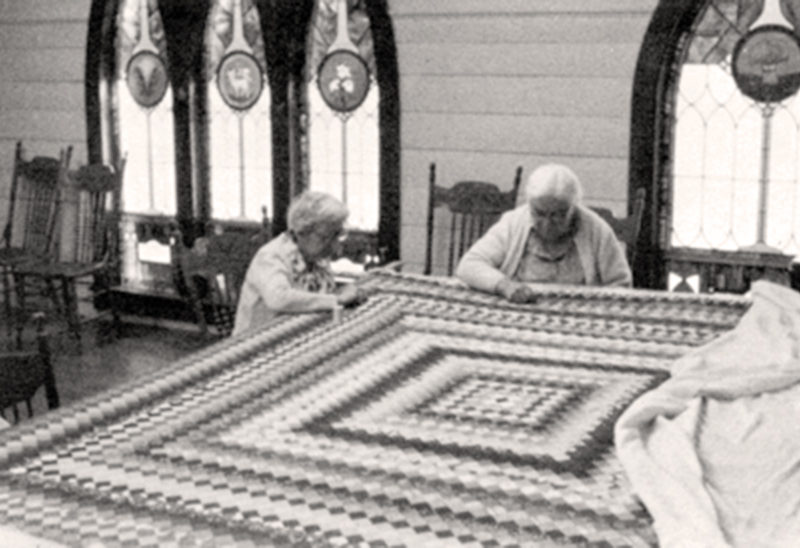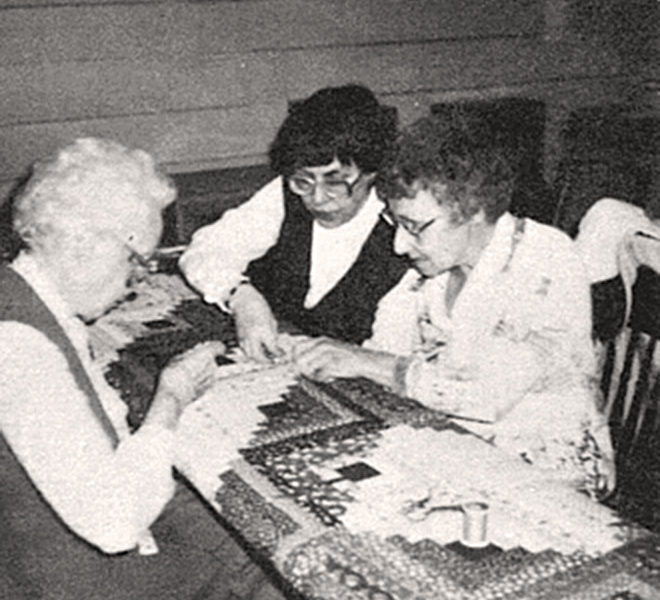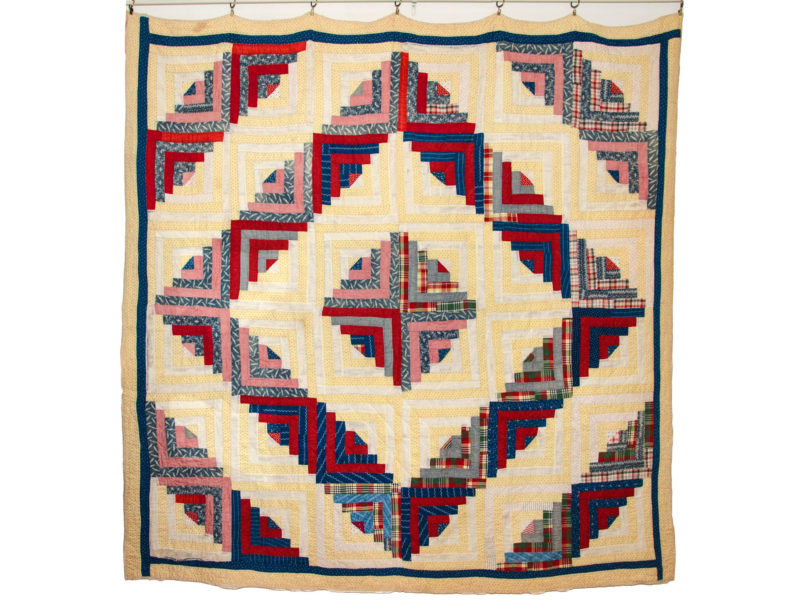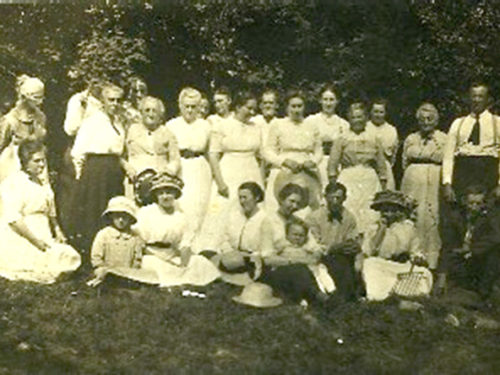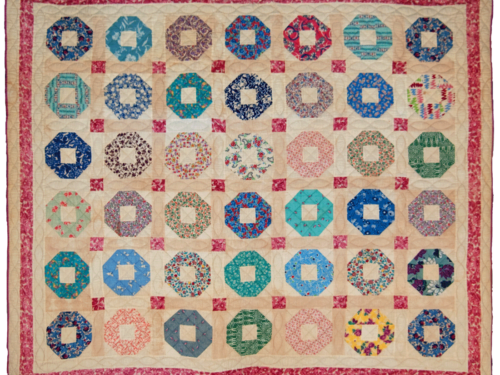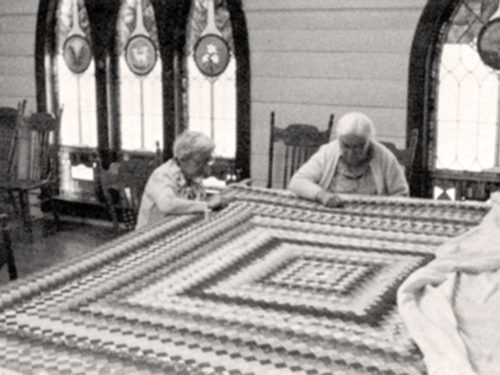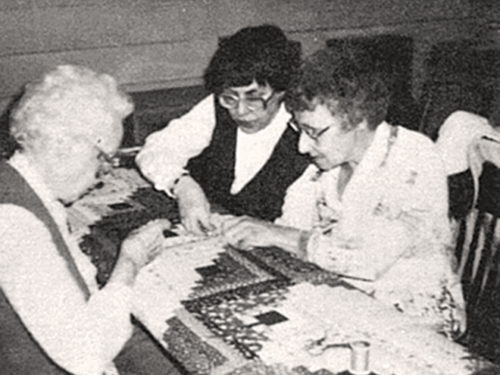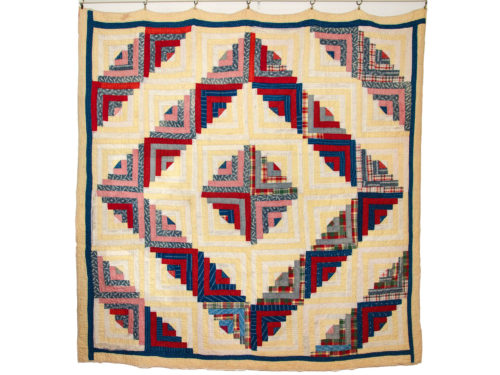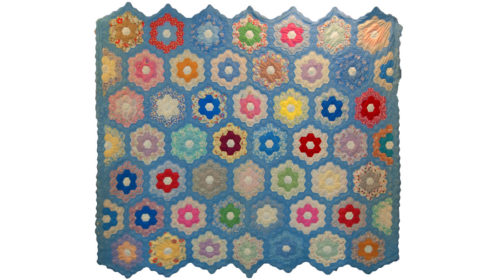The Hoffenthal, or Hopedale, Moravian Church was built in Newfoundland in 1835 to serve the German immigrants who had settled along Wallenpaupack Creek in the late 1820s and early 1830s. Hopedale was a mission church established by the Moravian Congregation in Bethlehem, and resident pastors were assigned to Hopedale by the Bethlehem Church. For the first few decades, the Hopedale pastors, being bilingual, conducted services and Sunday School classes in both English and German, thereby helping new congregants assimilate into the surrounding predominantly English community. The first church building was replaced by a larger one in 1853, and again in 1907.
The earliest record we have of a Moravian Church Ladies Aid dates from July 1885. Gertrude Moench, the pastor’s wife, was the group’s first president, succeeded the following year by Louisa Heberling Rohrbacker. Louisa and her husband George owned a farm in Roemerville, where they raised their four children. Louisa served as president of the Ladies Aid for twenty-six years. She is remembered for her skill as a needlewoman, her dedication to the mission of the Ladies Aid, and for walking two and a half miles to attend the weekly meetings at the Moravian Church in Newfoundland, regardless of the weather. Given the snowy Pocono winters, that was an impressive feat!
Emma Beehn assumed the presidency in 1911, followed by Helen Kruger, Hannah Robacker, and Helen Feigel. All were known to be excellent quilters. When Helen Kruger was president, she would cut the pieces for an entire quilt and pass them out to Aid members on Sunday after church. They would then be sewn by hand and brought to the next meeting the following Thursday. During Helen’s tenure, the Ladies Aid grew to a total of eighty-six members.
Mother [Hannah Robacker] was president of the Newfoundland Ladies Aid for a long time, and she ran it with an iron hand—a hand that held a needle and thimble! She would check the quilting at day’s end and remove any stitching that wasn’t up to snuff and re-stitch it. During the months when it was too cold upstairs in the church, the ladies would quilt at home. I remember the frame took up our whole living room, It was like having my own little tent to play under. Of course, as they rolled in the quilt my tent got littler and littler. I recently made my own quilt and found out I have a little of my mother’s perfectionist gene in me, too. Mother had hand-pieced three quilt tops, and I’ve had them in my cedar chest all this time, more than forty years. One of them is Sunshine and Shadow—I remember her laying it out on the living room floor to get the piecing right. I finished it last year and gave it to my son.
—Rita Robacker Thomas
The Aid also organized fundraising dinners at the church which were open to the public. In the early years food was prepared on a wood-burning cookstove, and water for cooking and cleaning up was carried to the basement kitchen in buckets. The dinner was usually chicken, and very few items were purchased so the profit was nearly 100 percent. Everything was served family style. When the popularity of these dinners outgrew the size of the serving room, they were moved across the road to the school cafeteria where the seats were the same benches used by school children during the day.
The Ladies Aid held annual bazaars where they sold their quilts and fancywork—embroidered aprons, lace-edged pillowcases, cross-stitched tablecloths, knitted sweaters and afghans, and rag rugs. To make the rag rugs, inch-wide strips were ripped from cast-off coats, overalls, dresses, and petticoats and rolled into large balls to be sent to a weaver.
For a few years, Aid Society meetings were held in members’ homes. Each member would bring a covered dish or dessert, and the hostess would usually make scalloped potatoes. When Freda Hause was hostess, she always made a huge pot of vegetable soup. The variety of dishes was endless, except for that one time when everybody brought baked beans! Attendance at the meetings would be so large that chairs, dishes and silver had to be borrowed. No paper plates were used in those days.
My grandparents Ignatz and Mary Staph immigrated from Hungary and Austria in the early 1900s and settled in Newfoundland. I was always invited to go along when they picked up feed for their chickens. I got to pick out the cotton print feed sacks I liked best, and my grandmother would sew sundresses for me from the fabrics I had selected. She was adept at all needlework. I learned to cross stitch from her and was a willing observer when she and her friends from the Ladies Aid gathered at her home for a quilting bee. — Judy Staph Tarallo
Any member, upon reaching her 50th birthday, was given a surprise party. She would receive a five-dollar gift, and birthday cake and ice cream were served to all. When a member passed away, a memorial of ten dollars was given to the church, with the specification that it was to be used for the Music Department. Music was always important in the Moravian Church.
By the early 1990s membership had dropped to twelve. Although they no longer pieced quilts, they continued to meet weekly in the Upper Room of the Moravian Church where they quilted and bound quilt tops for a fee.
